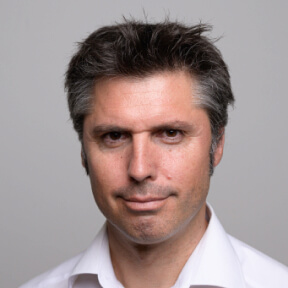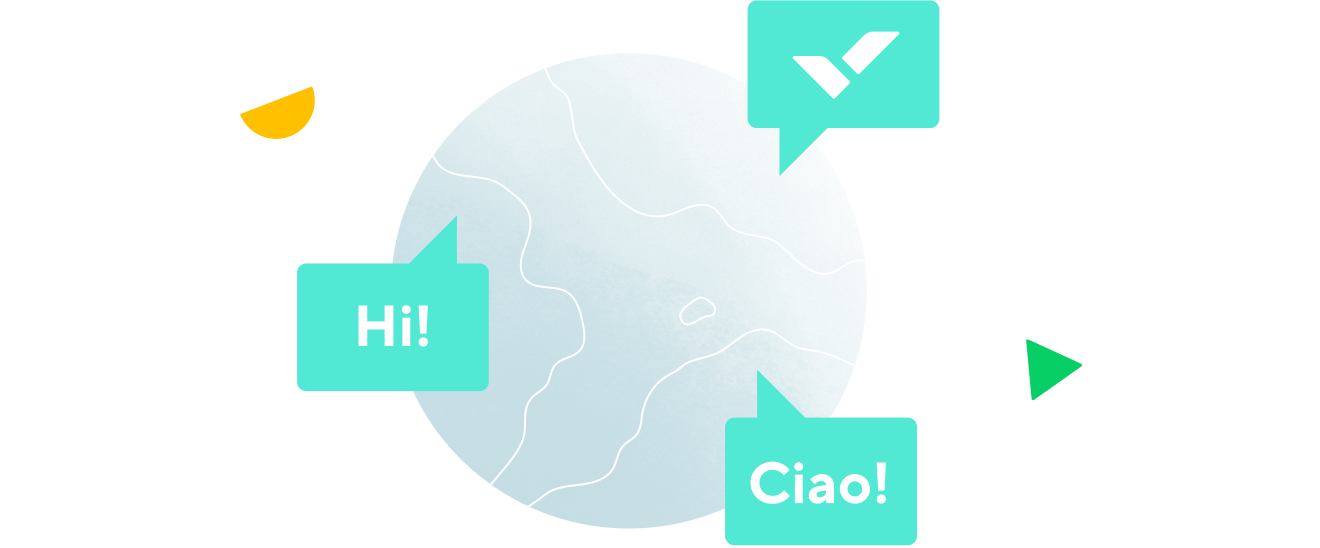Siemens Smart Infrastructure and Wrike: Standardizing Processes and Automating Project Delivery on a Global Scale

Customer
Siemens Smart Infrastructure
Website
Headquarters
Zug, Switzerland
# of Users
14,000
Industry
Building automation and control systems, energy systems, grid control and electrification, software, smart storage solutions
Top Challenges
Siloed systems, Dispersed international teams, Large volume and scale of projects, Disjointed tech added security risk
Feature Highlights
- Intuitive, at-a-glance dashboards
- Custom workflows and templates
- Mobile-ready SaaS
- Integration with SAP
- Enterprise-grade security
- Premium Support 24x7
Departments Using Wrike
Pre-Sales, Sales, Project Management and Execution, Commissioning, Engineering, Enterprise Business, Business Excellence, Finance, Procurement, Quality Management, Environment & Health & Safety, as well as external parties like third-party suppliers and customers
Why Wrike
A collaborative work management system to improve security, streamline systems, standardize processes, and operate globally
Founded in Berlin, Germany in 1847, Siemens is a technology company focused on industry, infrastructure, mobility, and healthcare. Creating technologies for more resource-efficient factories and resilient supply chains to smarter buildings and grids, to cleaner, comfortable transportation and advanced healthcare, the company empowers customers to transform the industries that form the backbone of economies, improving the everyday for billions of people. The company has around 293,000 employees worldwide.
Siemens Smart Infrastructure is shaping the market for intelligent, adaptive infrastructure for today and the future. It addresses the pressing challenges of urbanization and climate change by connecting energy systems, buildings, and industries. Smart Infrastructure provides customers with a comprehensive end-to-end portfolio from a single source — with products, systems, solutions, and services from the point of power generation all the way to consumption.
Within Siemens Smart Infrastructure, the Global Standardization team is responsible for improving internal operations and harmonizing processes for project delivery and service offerings in over 20 countries across four regions: Americas, Europe, Germany, and Middle East-Asia Pacific.
14,000
users in 20+ countries
10%
improved productivity
250
custom workflows
The Challenge
“Our main challenge is not only the execution of vast projects,” explains Hannes Leitner, Process Owner Project Execution at Siemens Smart Infrastructure. “We also execute many small projects around $50–100,000, and our challenge is to be margin efficient with those projects. The quantity and diversity of projects is challenging. Additionally, these projects involve multiple groups such as commissioning, procurement, business administration, engineering, quality management, EHS management, third-party contractors and installation partners, customer management, and more.”
“We wanted to reduce labor time so we could be more competitive, and at the same time offer a collaboration tool on a global scale,” continues Leitner. “Previously, people used a variety of input tools with differing standards, reliability, and data security. We knew we needed to find a better way to drive efficiency and reach our operational goals.”
“Our project managers, their teams, and the involved parties in the regions execute customer projects — which is also their core expertise,” says Christina Fischer, Global Product Manager at Siemens Smart Infrastructure. “They create essential business value for our external customers every day. They should be able to focus on that. Our vision was to provide a central state-of-the-art collaboration platform for project managers, connecting all employees involved in delivering customer projects, increasing transparency and harmonization for the benefit of the customer.”
The Solution
About four years ago, the Global Standardization team began to look for a global work management tool. “One thing that was key to us in the process was the user satisfaction, usability, and intuitiveness of the tool,” recalls Leitner. “We wanted people to be able to say, ‘Hey, this tool is something I can work with. This is where I can get the support I need for my work.’”
After evaluating several tools, Leitner’s team selected Wrike’s versatile and intuitive work management and collaboration platform. This led to significantly reduced labor time, increased competitiveness, more employee satisfaction, optimized return on investment, and produced benefits for customers with a coherent and competent solution.
“In my experience, of all the tools we have introduced in our team in the Americas region,” begins Operations Standards Manager Damian Robles of the North American team, “Wrike is very well accepted.”
The Wrike implementation at Siemens Smart Infrastructure is characterized by an agile approach spanning nearly four years, including continuous deployment in over 20 countries, customized onboarding of users by country, and development of new features over time with feedback loops involving region heads and active countries.

“Good usability helps, but Wrike’s strong integrations and security bring a lot of value.”
Hannes Leitner, Process Owner Project Execution at Siemens Smart Infrastructure
Increased data security and global standardization
“Before Wrike, people were using isolated input tools. When it came to collaboration or communication, they’d set up chat groups or used cloud storage for sharing project documents,” notes Leitner. Siloed systems can lead to fragmented communication, obstacles in tracking down answers or assets, and increased security risk.
“Security matters,” emphasizes Leitner. “Now, Wrike is aligned to our internal enterprise standards, and the users can add all their confidential data in Wrike without having to fear security breaches or compliance issues.”
“The project managers can trust Wrike’s reliability and security with the mobile-ready aspect, which is a very big drawing point,” adds Fischer. “For example, we have good feedback from engineers in the field using Wrike on tablets. They can let customers sign documents directly, make changes to working documents, or communicate adjustments to their colleagues on the go.”
By consolidating the project execution process and team collaboration into Wrike’s digital workspace, the Global Standardization team has increased data security, provided a global core for standardization, and empowered international local teams to work from anywhere.
Intuitive interface helps drive adoption
When assessing work management solutions, the Global Standardization team also focused on usability and ease of use.
“Wrike is easy to understand and use,” says Fischer. “For example, the dashboards are a customizable way of managing work — whether it’s organizing your team or filtering data. A team can see at a glance what they are working on right now or if they need to mitigate risk or escalate a task.”
With Wrike’s platform in place, Siemens Smart Infrastructure had an intuitive way to increase transparency of project and task management and improve project and service quality, ultimately driving efficiency. “In order to reduce the amount of labor time on a project, we need a good adoption of Wrike,” explains Leitner. “We built a KPI-based adoption dashboard, where we found a way to measure adoption through defined quantitative and qualitative metrics. Together with our regions, we set targets for the adoption and ask them to track them through the dashboard, following up and planning actions in regular touchpoints with the countries.”
With Wrike, Leitner and Fischer’s team can demonstrate how its operational efforts align to corporate strategies and goals like reducing labor time per project.

“Wrike offers some helpful, out-of-the-box features that are essential for enterprise use. We set up the dashboards so collaboration and task management work best across functional teams in branches. Custom workflows and conditional request forms also support and scale up to efficient work management in the regions. Additionally, the effort estimation in Wrike's resource management is helpful. Changes in due dates or tasks are easily tracked and consolidated, supported by the Gantt chart view — which makes planning easy.”
Christina Fischer, Global Product Manager at Siemens Smart Infrastructure
Custom workflows to standardize processes and keep local work flexibility
Siemens Smart Infrastructure delivers a wide variety of solutions and services across multiple geographic regions, so many of the teams work differently from one another or have different requirements and constraints to consider when executing projects.
“In Wrike, we create project templates and end-to-end workflows to fit the reality in the countries,” begins Leitner. “We created a flexible project template, where the project reflects the size and complexity of the customer project. And we also customized Wrike according to four different building disciplines: comfort, security, fire safety, and energy and performance services. For example, in fire safety projects there are a multitude of tasks specific to fire safety. On top of that, the project might differ depending on the type of the customer like data centers, hospitals, hotels, or industrial complexes.” Wrike’s versatility gives the countries and local teams in the branches the flexibility to execute projects according to local requirements, while at the same time following global standards.
Siemens Smart Infrastructure also leverages Wrike’s flexibility by developing key API integrations to streamline project intake. “We use an integration with our SAP system. Once a project is booked, the project is automatically created in Wrike with the right project template and filled with data,” notes Fischer. “Then in Wrike, we have an automatic assignment of the project manager, who is also set in SAP.” The ability to automate these kinds of repeatable and administrative tasks allows the local teams to work faster and the country responsible to focus on more strategic initiatives that will benefit the business.
Improved collaboration and support
The Global Standardization team at Siemens Smart Infrastructure values how Wrike supports collaboration and helps the team work better together. “Collaboration is the key human factor,” says Fischer. “We’re getting people involved and enthused about working in a digital collaborative platform. It all comes back to Wrike being a usable, impactful, and collaborative tool, fostering meaningful connections between our experts across the globe.”
The Global Standardization team also appreciates the Premium Support at Wrike. “We like people being so responsive and so engaged,” reflects Leitner. “We even have a dedicated customer success manager, who is supporting change, and escalating issues.” Robles agrees, adding that “The vast amount of instructional videos, help articles, and community support from Wrike users is very helpful.”

“Wrike provides a flexible system infrastructure that is easily configured to meet our business needs. While there are differences in the use cases across our organization, we are all working on projects and are able to standardize globally, on key functions, as well as exchange best practices in our implementation around the world.”
Damian Robles, Operations Standards Manager at Siemens Smart Infrastructure in North America
The Conclusion
Wrike’s versatile and collaborative work management system has helped the Global Standardization team — as well as the regional and country stakeholders at Siemens Smart Infrastructure — to reduce labor costs, streamline systems, and increase collaboration. By deploying Wrike to more than 14,000 users in over 20 countries, Siemens Smart Infrastructure aims to improve productivity by around 10%.
“Wrike helps us collaborate in the best possible way, and it gives our teams the support they need to work better. We could roll out a tool on a global scale, and we were also able to offer a secure and an integrated tool,” concludes Leitner.
“The users are consistently looking for ways to enhance our current use cases because Wrike prevents them from getting bogged down,” adds Robles. “Additionally, the value of their work effort is more clearly understood.”
“Now, we can ensure that certain steps of our standardized processes have been followed, approved, and viewed by the right people,” explains Fischer. “Wrike simply helps people work well together.
Find out how Wrike can help your business
Schedule some time to talk with one of our experts.



